FEATURE Empowering CBEMR Ambassadors and Strengthening the MAP CBEMR Network

THAILAND – The Mangrove Action Project (MAP) has been promoting and working on Community-Based Ecological Mangrove Restoration (CBEMR) with coastal communities along the Andaman Coast since 2012. A group of communities have gathered together as an informal network calling themselves the “CBEMR Network”. On the 20th to 22nd of April, 2019 the second workshop on “public speaking and presentation skills” was held in Krabi Province for fifteen CBEMR ambassadors from five of MAP’s CBEMR communities representing three provinces in Southern Thailand: Trang, Krabi and Phang-Nga. The three day workshop was facilitated by a professional instructor, Khun Wara Chaitap, from Chiang Mai. This training was a follow up workshop for the Facilitation Skills workshop held in May 2018. The workshop aimed to strengthen the participants’ skills on how to share and present CBEMR experiences and lessons learnt with outsiders especially from the government sector. As most of the CBEMR community representatives regularly host and attend meetings and workshops, there are opportunities for them to deliver their experiences confidently. MAP believes that it is a very important strategy for local peoples’ voices to be heard and their role to be recognized not only through their practices but also through their presentations when they have opportunities. READ MORE GLOBAL Can planting billions of trees save the planet?

GLOBAL – Organisations from around the world are reforesting at an unprecedented rate. The global elite is embracing tree-hugging rhetoric. It is as if the world has suddenly woken up to the restorative powers of plants. Forests can stop runaway global heating, encourage rainfall, guarantee clean water, reduce air pollution, and provide livelihoods for local people and reserves for rare wildlife. Politicians are waking up to the potential of “natural climate solutions” – reforestation and other ecological restoration – to capture carbon and tackle the climate crisis. Such solutions could provide 37% of the greenhouse gas mitigation required to provide a good chance of stabilising global heating below the critical 2C threshold. But it isn’t as simple as just grabbing seeds and saplings and sticking them in the ground. Non-native plantations can cause problems for biodiversity, local livelihoods – or both. Grand pledges aren’t always met. A 2014 UN declaration pledged to halve deforestation by 2020. Instead, record deforestation ensued and in 2018 an area of primary forest the size of Belgium was lost, the third-highest annual depletion since records began in 2001. Claire Dubois, who founded TreeSisters with a friend, Bernadette Ryder, says TreeSisters’ philosophy is different: local, community-based reforestation with native trees in the tropics. READ MORE From sharks in seagrass to manatees in mangroves, large marine species found in surprising places

GLOBAL – When we think of mangrove forests, seagrass meadows and saltmarshes, we don't immediately think of shark habitats. But the first global review of links between large marine animals (megafauna) and coastal wetlands is challenging this view—and how we might respond to the biodiversity crisis. Mangrove forests, seagrass meadows and saltmarshes support rich biodiversity, underpin the livelihoods of more than a billion people worldwide, store carbon, and protect us from extreme weather events. We know marine megafauna also use these habitats to live, feed and breed. Green turtles and manatees, for instance, are known to eat seagrass, and dolphins hunt in mangroves. But new associations are also being discovered. The bonnethead shark—a close relative of hammerheads—was recently found to eat and digest seagrass. The problem is that we're losing these important places. READ MORE World Rainforest Day June 22, 2019

Rainforests are vital for the survival of life on Earth – the Amazon alone provides 20% of the oxygen we breathe and the freshwater we drink. They absorb our carbon dioxide, stabilize climate patterns, and are home to half the world’s plant and animal species. Yet every minute, we lose an area of rainforest the size of 40 football fields, threatening our planet’s health and biodiversity. World Rainforest Day celebrates this precious natural resource and encourages action to preserve it. Your efforts, together with the actions of others, can have a positive impact on rainforests, biodiversity and the climate worldwide. READ MORE Global patterns in mangrove recreation and tourism

GLOBAL – The use of mangroves as a travel and tourism destination has not received much attention, but provides a high-value, low impact use of these important ecosystems. This work quantifies and maps the distribution of mangrove visitation at global scales using keyword searches on user-generated content of the popular travel website, TripAdvisor. It further explores the use of user-generated content to uncover information about facilities, activities and wildlife in mangrove tourism locations world-wide. Some 3945 mangrove “attractions” are identified in 93 countries and territories. Boating is the most widespread activity, recorded in 82% of English-language sites. Birdlife is recorded by visitors in 28% of sites, with manatees/dugongs and crocodiles/alligators also widely reported. It is likely that mangrove tourism attracts tens to hundreds of millions of visitors annually and is a multi-billion dollar industry. READ MORE AFRICA Tanzania chooses energy over the environment
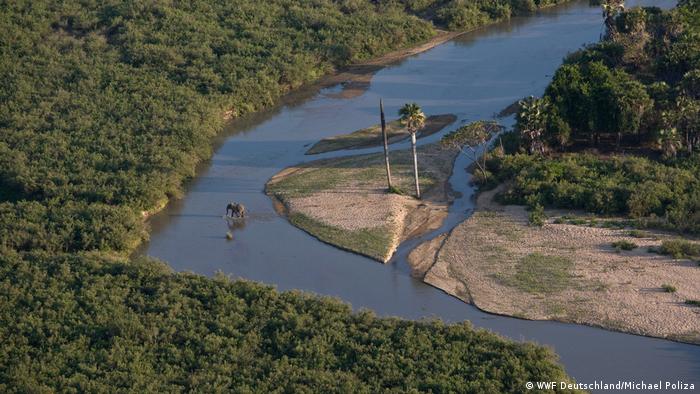
TANZANIA – Construction has begun of a mega dam to improve power supply throughout the country. There are fears this could herald the end of the Selous Game Reserve. In the Selous Game Reserve in southern Tanzania, construction work has begun in earnest on a controversial hydropower plant. Earlier this month, Energy Minister Mesard Kaleman announced that preparations had been completed and the two Egyptian companies awarded the contract could now go ahead with building the dam on the Rufiji River. To build the dam, the future flooding area must be freed of all vegetation. That's an area that far exceeds 1,000 square kilometers. The consequences would be devastating, Johannes Kirchgatter of the World Wide Fund For Nature (WWF) says. Along with the dam, roads and settlements would also be created in the reserve area and the whole region would become industrialized. Outside the reserve, downstream, the consequences would also be dramatic. There would be no more flooding as in the past to supply the mangrove swamps in the river delta with sweet water and protect the coast. Fishermen in the delta could suffer if it dried out. READ MORE Can Africa tap into 'debt-for-nature' plan to protect its forests?

AFRICAN CONTINENT – African countries may want to explore the opportunities presented by a recently-passed United States law that offers cuts in debt obligations to eligible nations that commit to channel the saved funds to protect their critical forests and coral reefs. The Tropical Forest Conservation Reauthorization Act (TFCA) has reactivated a “debt-for-nature swap” program, that has generated the equivalent of $339 million in local currencies since 1998 to protect 67 million acres of forests in 14 countries. The law creating the program had lapsed in 2014 but was reauthorized early this year. Amid heightening rates of deforestation and limited conservation budgets in many parts of Africa, the TFCA program has the potential to unlock supplementary resources for countries on the continent to protect their key forests and coral reefs. The latest version of the TFCA law includes coral reefs. It is well-known that two-thirds of coral reefs – a crucial natural resource – are threatened with degradation across the globe, including in Africa. Securing them should be a priority since they help to provide food, jobs and protection for almost a half of the world’s population. This also presents additional opportunities for Africa’s 38 coastal states to invest in marine conservation, including mangrove protection and restoration. READ MORE AMERICAS Don’t trash coral reefs for the cruise industry!

CAYMAN ISLANDS – The Caribbean: the name conjures up images of pristine white beaches, crystal-clear water and breathtaking coral reefs. The Cayman Islands are a first-rate destination for scuba divers – most would agree that the name “Eden Rock” is quite fitting for the territory’s most famous reef. Yet the local government seems oblivious to the ecological treasure just off its coast: it wants to ramp up mass tourism by dredging the reef and building a new port for mega cruise ships. Up to eight cruise ships at a time can anchor outside the port, and visitors are ferried to George Town by tender vessels. Lately, however, cruise operators have been threatening to only call at ports that can accommodate their mega ships – vast floating resorts with thousands of passengers. Apparently worried about a loss in revenue from mass tourism, the local government is ready to bow to the will of the corporations. To sweeten the deal, cruise operators have made financial commitments to help cover the costs of the project. The ecological damage to the Cayman Islands? Not their problem. READ MORE Marine Resources Council To Host ‘Mangroves Matter’ on Saturday, July 20

USA – The Marine Resources Council will celebrate International Mangrove Day by hosting “Mangroves Matter,” a free event set for Saturday, July 20 from 9:30 a.m. to 2 p.m. The Marine Resources Council Science, Education, and Mangrove teams will be on hand to answer mangrove and lagoon questions. The event will feature a delicious menu from Coastal Crab Company, live local musicians, along with a mangrove donation and planting drive. This festivities will take place at Marine Resources Council’s Ted Moorhead Lagoon House Learning Center at 3275 Dixie Hwy NE in Palm Bay. This celebration helps raise awareness and funds to restore the Indian River Lagoon. Educational presentations include a rain barrel workshop, mangrove propagule collection contest, artisan rain barrel auction, silent auction, prizes and more. READ MORE Mangrove forests, our first line of defense against storm surge
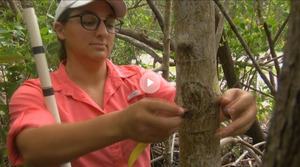
USA – Florida Gulf Coast University (FGCU) grad student Gianna Diaz is researching to see how human activity and nature is affecting mangrove forests. She's measuring the size and age of mangrove trees and counting how many baby mangroves are growing in forests from Sarasota to Marco Island. "When we understand that mangroves are critically important, we want to understand what the future looks like for mangroves, how these stressors may influence their ability to persist in the landscape," Dr. Win Everham, a professor at FGCU's water school, said. They're checking different sites to see how hurricanes affect the forests' health. She is also studying the impact of man-made features, like roads, that cut through forests. "We cut through a mangrove system, and we can restrict the ability for the tides to flush the system, in ways we don't fully understand yet. That flushing is important to the long-term health of these forests," Dr. Everham said. READ MORE ASIA Heritage site status for Coringa mangroves likely
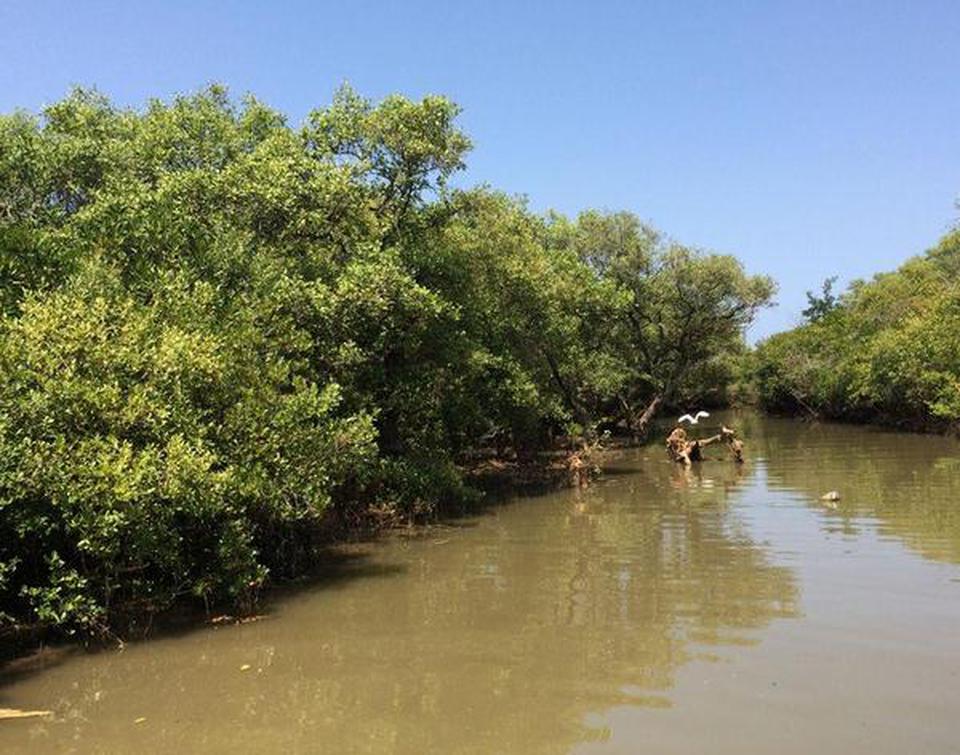
INDIA – The government has begun the process to get UNESCO’s World Heritage Site status for Godavari Mangroves at Coringa Wildlife Sanctuary, near Kakinada, touted to be the second largest mangroves in India. The Environment, Forests, Science and Technology (EFS&T) Department has constituted a seven-member committee for fulfilment of norms required for proposing the Godavari Mangroves (mada forests), at Coringa, as World Heritage Site, according to a GO issued for the purpose. The sanctuary has an 18-km-long sand pit where olive ridley sea turtles nest from January to March every year. There are 24 tree species in the mangroves. The committee is likely to submit its report in two months for declaring Godavari Mangroves, at Coringa, as World Heritage Site to the UNESCO. Once the Coringa sanctuary gets the heritage site tag, UNESCO will help develop tourism and protect the wildlife in the mangroves. READ MORE Sabah’s mangroves in danger

MALAYSIA – Mangroves are important to Sabah but undervalued and in danger, said Head of Conservation Sabah WWF M’sia Dr Robecca Jumin. “Sabah has the largest area of mangroves of any state in Malaysia, with over 232,000 hectares, mainly along Sabah’s east and southeast coast. Most are protected as Class V Mangrove Forest Reserves, or as Class 1 Protected or Class VI Virgin Jungle Forest Reserves. “However some critical areas, for example on Sabah’s west coast, remain unprotected. “While Sabah should be proud to host two wetlands recognized as being of global importance and designated as Ramsar sites – the Lower Kinabatangan-Segama Wetlands, and Kota Kinabalu Wetland right here in the capital, other parts of Sabah’s mangrove areas are decreasing or being degraded”, Dr Jumin said, in conjunction with World Ocean Day.Despite their immense value, mangroves are in constant danger of being damaged and disrupted by infrastructure like roads, hotels and housing developments, shrimp farms and fish farms, and to a lesser extent from being cut for firewood, charcoal and posts. Pollution, including oil spills and sediment, and rubbish like plastic garbage, are also major threats.
And the threat is not only from clearance: disruption of river and tidal flows can destroy mangroves and the fisheries and life that they support. READ MORE Vanishing mangroves a cause of concern

INDIA – Never before did Kerala turn so conscious about its depleting green cover than in the wake of the recent flood. The deluge and its aftermath woke us from a deep slumber, triggering studies and debates about how the vanishing green could prove extremely detrimental. In that context, the focus naturally shifts to mangroves, the perfect weapon to combat climate change, lessen the impact of storms and preserve marine wealth. However, the district, home to 13 true mangrove species, is witnessing a decline in its cover. According to studies, there is a sharp decline in species abundance and diversity of the plants and associates. Though the present area of mangrove cover in the city is 396 hectares, Avicennia marina, one of the abundantly found species in other parts of Kerala, is on the verge of extinction here. “Avicennia marina is found abundantly in other parts of the state but we see a sharp decline here. READ MORE OCEANA Mangrove tree on cattle property carbon dated as more than 700 years old

AUSTRALIA – The expression "farmers are the original environmentalists" gets thrown around a lot in regional Queensland. The expression refers to the ecological management skills those working the land have and how if they mistreat it, they are putting themselves out of a job. Queensland cattle farmer Lindsay Titmarsh proves that behind every saying there is some truth. Mr Titmarsh tends to the vast property with the same care and attention as a cottage garden might receive. He could walk you around the farm for days telling stories about the animals and plants that cohabit with his family and he has even published several books about the region. But of the thousands of trees on Tandora Station, a certain grey mangrove, or Avicennia marina, caught Mr Titmarsh's eye and he instantly knew there was something special about it. Carbon dating has estimated a grey mangrove tree on a Queensland cattle station is 738 years old. Until recently, it was believed the grey mangrove, a common species on coastal mainland Australia, lived for up to 200 years. Professor Norman Duke is a mangrove ecologist and botanist who has named about 10 per cent of the world's mangrove population in his 40 years of study. "This is the oldest [mangrove] tree we know about in Australia and probably the world ranking in that respect," Professor Duke said. READ MORE
Like this newsletter?
Pease consider donating to MAP to keep it going.
Giving could never be easier | ACTION ALERTSDon't trash coral reefs for the cruise industry! – TAKE ACTION Sea turtles or condominiums?
Sand mining and construction work would wipe out a marine biodiversity hotspot and destroy the livelihoods of local people, who have not been consulted. Please SIGN! Save Penang! Reject the 3-Islands Reclamation!
The lack of public consultation and detailed information about the project is shocking in view of the size of proposed reclamation which is 4,500 acres or 7 square miles
PLEASE SIGN
Tell HSBC: Stop Profiting From Destruction – Sign the petition Halt further destruction of primary mangrove forests in the Maldives. We are urging you to write letters to the recently elected president of the Maldives and his environmental minister View Sample letter Save Pulau Kukup National Park – second largest mangrove island in the world. Sign The Petition Like this newsletter? Pease consider donating to MAP to keep it going. Giving could never be easier 
UPCOMING EVENTS 2019 Environmental Science and Climate Change Conference September 10-11, 2019
 REGISTER NOW REGISTER NOW 
Restoring The Natural Mangrove Forest
Watch movie 
Community Based Ecological Mangrove Restoration in Rufiji Delta VIEW VIDEO Video: Mangroves for the Future – A look bacK. As the latest phase of Mangroves for the Future (MFF) draws to a close, this video highlights some of the project’s most successful initiatives – from local women supporting national park management in Viet Nam to an island in the Maldives that has become a model for waste management, and everything in between. View Here Making the case for Emergency Climate Change Action
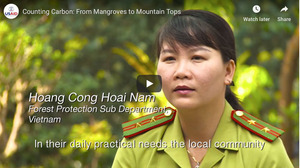
Counting Mangroves

Placencia mangrove workshop teacher's poem Volunteer with MAP – LEARN MORE Watch Children's Mangrove Art Calendar Promo 2019 Click Here  
MAP 2019 Children’s Calendar CLICK HERE You can help ensure that the knowledge and skills needed to conserve and restore mangroves is preserved in coastal communities READ MORE WANT TO GET INVOLVED?
Follow and Join MAP!    

Like this newsletter? Pease consider donating to MAP to keep it going. Giving could never be easier

VOLUNTEER OPPORTUNITY
MANGROVE ISSUES Want to learn more about mangroves?
Our short presentation will give you a better understanding of the issues we are working to solve. WATCH PRESENTATION What is CBEMR? Easy to follow fact sheet – CLICK HERE What is EPIC? – The Ecosystems Protecting Infrastructure and Communities (EPIC) project: the role of ecosystems as protective barriers against climate induced hazards MANGROVES APP AVAILABLE
A pictorial field guide for easy identification of various mangrove species and learning about the mangroves ecosystem. CLICK HERE View MAP’s uploaded Videos at MAPmangrover’sChannel
Question Your Shrimp Consumer/Markets Campaign!
WATCH VIDEO Mangrove Restoration in Asia – Watch Short Video The Value of Mangrove Forests View Video CBEMR Experience Exchange MAP 2017 English Subtitles
VIEW THE VIDEO Mangroves: Guidebook to Malaysia – Click Here
Mangrove rehabilitation in Asia – Local Action and cross-border Transfer of Knowledge for the Conservation of Climate, Forests and Biodiversity VIEW VIDEOS HERE SHARE MAP'S VISION
CLICK HERE to watch short introductory video. Together we can work "at the roots of the sea". Our short documentary, Reducing the Risk of Disaster through Nature-Based Solutions : Mangroves

Exclusive Interview with Alfredo Quarto, Co-Founder and Executive Director of Mangrove Action Project – See more
Marvellous Mangroves Curriculum The Marvellous Mangroves Education Forum is an online hub for those utilizing the Marvellous Mangroves (MM) Curriculum. It gives students, teachers and anyone interested in mangroves, the opportunity to learn and share ideas themed around the curriculum, to connect and communicate with others around the globe whilst exploring mangroves from your computer or on the go. VISIT 
The award-winning Marvellous Mangroves (MM) curriculum educates children on the importance of mangroves and their ecological functions, teaching them about modern challenges and mechanisms for sustainability. VIEW VIDEO Marvellous Mangroves Curriculum in Bangladesh – WATCH VIDEO
MARVELLOUS MANGROVES IN BRAZIL
En Portuges 
Marvellous Mangroves – A Curriculum-Based Teachers Guide. FOR MORE ON MAPs AWARD WINNING CHINA MANGROVE CURRICULUM VISIT

VIMEO SHOW
VISIT OUR "MM" WEBPAGE Check out our presentation for more details on Marvellous Mangroves Read this 10 page history of the development of MAP’s educational curriculum VIEW DOCUMENT
Article in Canada's Green Teacher Magazine – Read More
Like this newsletter? Pease consider donating to MAP to keep it going. Giving could never be easier
Green Planet Fundraising Assists MAP – LEARN MORE
Volunteer Opportunities with Mangrove Action Project CLICK HERE
"Question Your Shrimp" Campaign Question Your Shrimp- Don't Buy or Sell Imported Tropical Shrimp! Sign the Petition Learn more about the affects of the shrimp industry on mangroves by visiting our blog
Editor’s Note: Mangrove Action Project’s Executive Director, Alfredo Quarto was interviewed about shrimp by Green Acre Radio’s Martha Baskin
LISTEN TO INTERVIEW Information sheds clear light on shrimp-mangrove connection
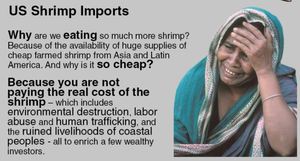
SEE DETAILS MANGROVE/SHRIMP Sign the Consumer's Pledge to avoid imported shrimp
Not yet a MAP News subscriber?
Click here to subscribe. Note to Our Readers: We strive to keep active links in our newsletter. However, due to circumstances beyond our control, occasionally links to stories may become broken. If you find a link to a story is not functioning, please cut and paste the headline into your browser search bar. In most cases you should be able to locate the original story.
|
































